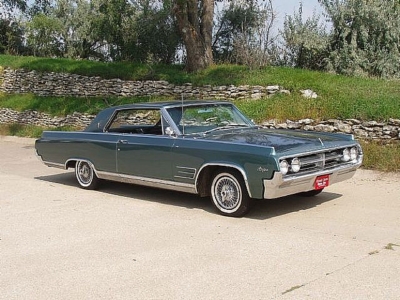
The contemporary automobile is, without question, a technological marvel. Unfortunately, it is also becoming a computer on wheels. Computers now operate most of the functions, including engines, transmissions, brakes, suspensions, and combinations of all four. Only a few systems remain to be integrated before the automobile is totally computer-operated. There won’t be much left for the driver to do.
Vintage cars, on the other hand, allow the owner to remain in charge of his or her destiny. Older vintage automobiles require the use of a hand choke, maybe a floor-mounted starter, definitely a manual transmission with one or more non-synchronised gears requiring the driver to double-clutch. Human muscle, not power-assist, is needed to turn the steering wheel, while the brake pedal needs a deft touch for smooth stopping.
Get into an antique and chances are you’ll find controls for throttle, choke, and vacuum, mounted on the steering column. Slowing and stopping might require the use of a foot brake plus a lever which may be located on the outside of the cabin. Neither of which are particularly effective. And you’d better know how to use a hand crank, even if the vehicle is equipped with an electric starter.
More recent vintage cars have many of the advantages we now take for granted, such as power steering and brakes, automatic transmissions, fully-synchronized manuals, along with conveniences for driver and passenger comfort. Yet even these cars put the driver in tune with the road, with no electronic devices to take over during unexpected understeer or oversteer and no ABS to substitute for driver-modulation of the brakes in icy conditions.
And need we mention the pleasure of actually looking after the car yourself? Servicing it at home (don’t even bother looking under the hood of a new car… you’ll be lucky to find the engine let alone change a spark plug); cleaning, washing, shining the metal to showroom condition (or at least show-off); fiddling with a carburetor jet to get the best state of tune… these are the little things that make ownership meaningful to the vintage car owner.
Whereas the contemporary owner rides in a hermetically-sealed, climate-controlled cocoon, ears responding only to a 6-speaker sound system set at db-blasting levels, the vintage car driver listens to every pulse of the engine, instantly senses changes in performance, feels the pavement through throttle and wheel.
Chances are the vintage enthusiast will be cruising at a moderate speed, windows open or top down, admiring the landscape while enjoying the pleasing smells that nature provides from passing fields. There’s no hurry when you drive a vintage car; it’s the “being there” that matters. Which is the way things used to be before people took driving for granted.
Not that vintage car ownership is without its trials and tribulations. Any older car requires more care and may break down at unexpected moments, with no onboard GPS navigation system to call for help. Parts can be hard to find. Repairs, for the owner who lacks mechanical aptitude, may be expensive. And there’s a certain reluctance to take one’s “baby” out in adverse weather conditions.
Nevertheless, we’re convinced that vintage car owners have more fun. They love their cars. They understand the lure of the open road— a magical potion that once drew millions to the highways in search of freedom, change, and curiosity for what’s around the next corner. The romance of car ownership is still theirs to enjoy and explore.
And that, we believe, is why the vintage car hobby is growing while the auto industry is busy complaining.